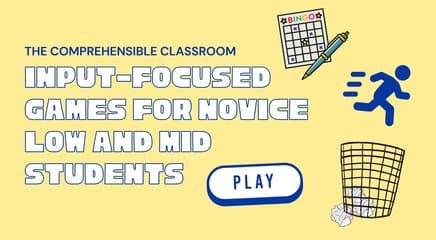After most class stories that we tell (well, at least any story that isn't totally lame), I like to have the class make a storybook to add into the class library. They are great to have when students stop in with friends or come in for conferences with their parents. I made a 14 page template in Numbers (sorry, PC users!) that is sufficient for any story (it's attached to the duplicate post on my website). Sometimes, there is very little text on any given page; other times, there is a lot. If you download the template, open it in Numbers and, under the File menu, select "Save As Template". That way, it is always there and easy for you to adapt when you open up Numbers. This is how we make the storybook:
- After you've finished asking a story, divide the script into 14 chunks (it could be 15 if you use the back cover, or 13 if you write "the end" on the last page).
- Divide your students into fourteen groups. In my classes, this means either two or three students per group, depending on the size of the class...you may have one or two students per "group". They do not need to be even.
- Give each student a 4.25" square piece of computer paper. Have them write their names on one side.
- Assign one chunk of the script to each student. Require all students listen as you assign sentences to different groups, asking them questions and circling as you go (ex: Do Bob and Jill draw "Sarah wants to read a book" or does Billy draw "Sarah wants to read a book"). That way, you get more reps. Students can write their assignment on the back side of the paper (the one with their name on it) if they wish.
- After you've assigned a scene to all groups, allow students to begin illustrating their scene on the piece of paper. There can be dialogue on the page, but the actual text that they were assigned needs to be written on the BACK. Illustrations should be in color, of course!
- Remind students to make quality illustrations so that theirs will be selected for the class storybook! Also, the illustration should fill the space on the square of paper.
- As students finish their illustrations, show them on a Doc cam and ask students if they can tell you what is happening in that picture, and if it happened at the beginning, middle, or end of the story.
- After class, type the story into the template. As you type text into the table on the first page, it will automatically put that text on the correct page of the book. HOWEVER, you will need to position the boxes on each page so that all of the text is showing. This may take as many as five minutes to get it perfect, GASP!
- Print out the storybook. Flip every other page and glue them together back to back OR copy them back to back (but that wastes paper from the original print-out so I don't recommend it).
- Glue the pictures into the storybook (or have a student!!). Unless I have a huge number of absences, I have at least two illustrations per chunk, so I make two storybooks for each story. **It is very important that you try to include any illustration that was drawn with effort. Some kids try to make them look nice, so I don't feel bad about not including them. You can put multiple illustrations on one page, even if it means cutting them out and using the best components from each one. You can also put illustrations on the front and back cover.
- Laminate it and put it in your class library. You can read it to your class the next day or wait awhile and remind them of how awesome and creative they are!!



